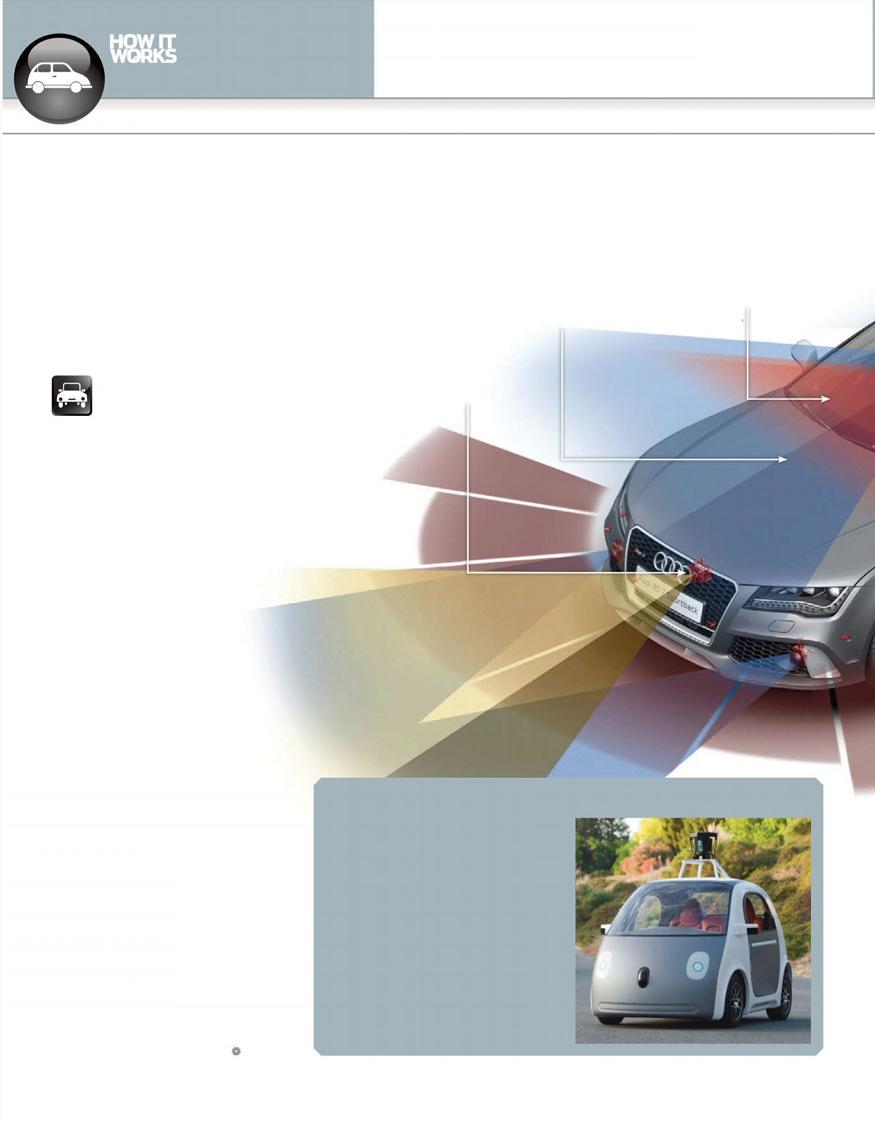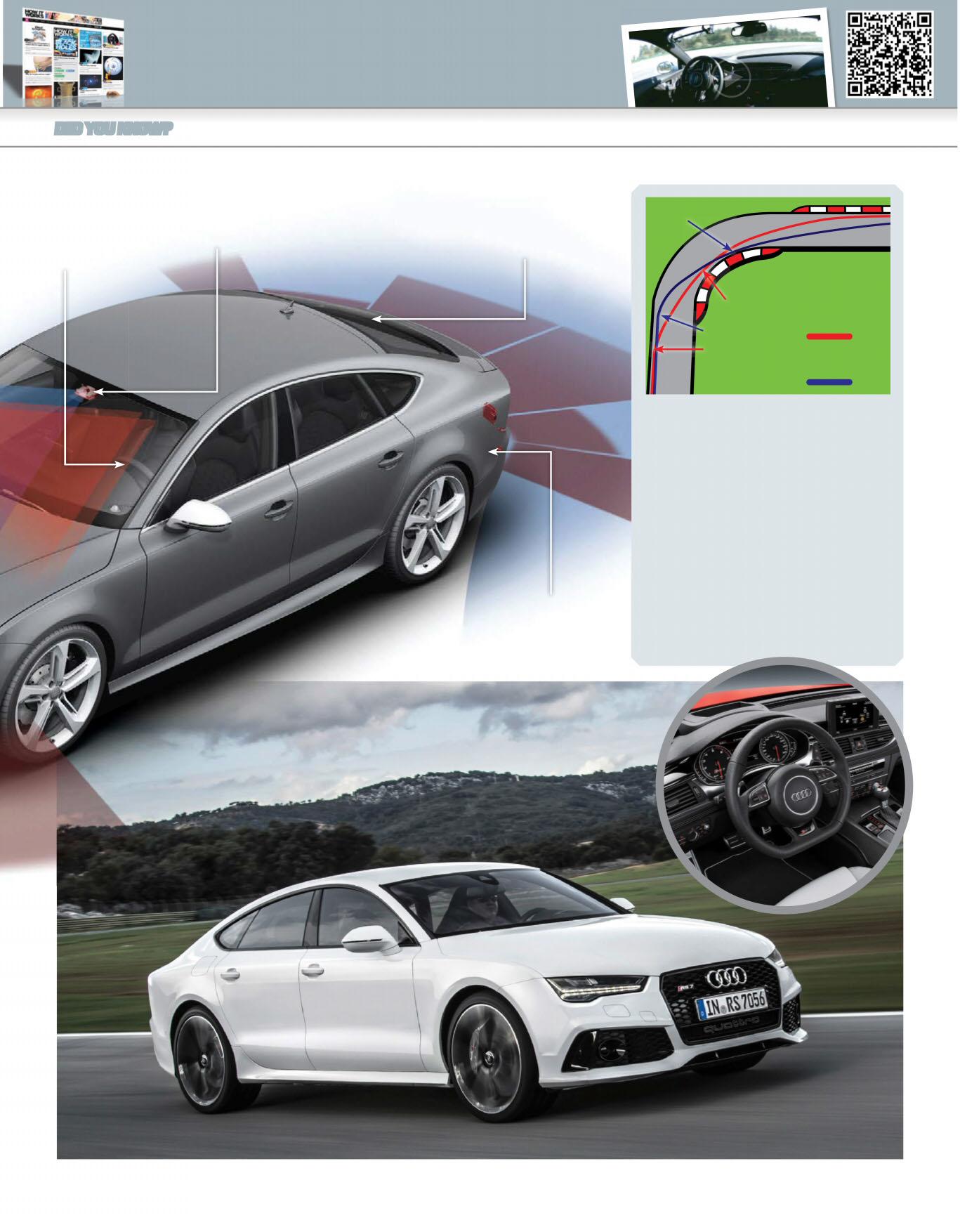
4 minute read
Driver versus driverless
TRANSPORT
Driver versus driverless Mappingprogrammes
Advertisement
The driverless Audi RS7 in action
Here’s how the driverless Audi RS7 prototype races round a track without any human input
Differential GPS
How the Audi RS7 driverless car can set a faster lap time on its own than with a human at the wheel
Differentmapping programmes are available,butat its limit it can travel at up to240km/h(149mph) and position itself to within1cm(0.4in) of the edge ofthetrack. This improved GPS system is accurate to within 10cm (4in), far better than the 15 ofaconventional
It’stheage-olddebate:istechnology better than the talents of humans? In the automotive world, this argument is fast rearing to a head, with driverless cars now being fully tested on public roads around the world. However, while driverless cars are primarily aiming to be safer than those piloted by a human being, German manufacturer Audi wanted to fi nd out if they are faster, too. The answer to this is the Audi RS7 driverless car prototype, a pumped-up sports car that’s been specially adapted with driverless technology.
The RS7 driverless concept works in much the same way as a conventional driverless car currently being developed by other manufacturers, including Toyota and Google. As well as an advanced GPS system with pinpoint accuracy, cameras are placed around the vehicle that ‘read’ signs and the layout of the road or track ahead. These work in tandem with sensors and radars dotted around the vehicle, which constantly monitor the proximity of the car to the road and other objects. All this information is fed to a central computer, which processes the information and operates the car accordingly.
Where the Audi RS7 triumphs over other driverless cars, though, is not only in the speediness of this entire process, but also in its intelligence. On a track, a ‘racing line’ is taken by drivers to get around the track in the quickest time. This involves using the entire width of the track, braking at the last possible moment before a corner, and keeping the car perfectly balanced throughout. As a thrash around the Hockenheim circuit demonstrated, the driverless RS7 prototype was found to take a very precise racing line on the track, nearly identical to that of a seasoned racing driver. The technology isn’t without merit, either: a driverless RS7 actually beat a lap time around the Ascari circuit (by two whole seconds!) set by a human being in an identical car.
Front-mountedcamera
Thisreadsroadsignsand, on a track, the projection of the next corner for the ECU.
The evolution of the driverless car
The driverless car industry is fast evolving within the automotive industry. Interestingly, it’s not car manufacturers themselves that are at the forefront of the technology either: that accolade goes to technology giant Google, which has developed a unique pod-like vehicle that contains a single cushioned bench inside for all occupants to sit on. Materials used on the Google car are also ground-breaking, with a bendy facia and plastic windscreen implemented to help cushion the blow to a human in the unlikely event of a collision.
Other companies such as Toyota or Volvo have been busy adapting their own conventional passenger vehicles to accommodate driverless tech, but the roof-mounted radar and bigger computers have often proved unsightly and impractical. But there’s more: rumours are also gathering pace that Apple is developing its own autonomous vehicle, so watch this space…
DID YOU KNOW?
In2010, a driverless Audi TTS successfully took on the Pikes Peak hillclimb challenge
Car controls
The ECU sends inputs to the car’s controls, such as steerin throttle
Infrared camera
An infrared camera is fi tted to enable the car to be driven in darkness thanks to night vision.
Central ECU

This constantly processes all the data from cameras, sensors and GPS, and decides how to control the car as a result.
Ultrasonicsensors
Dotted all around the car, these constantly monitor the proximity of the car to the edge of the track.
APEX
APEX
TURN POINT TURN POINT
BASIC RACING LINE
LATE APEX (SQUARING OFF)
Racing line: the quickest way around the track
Race drivers will take a certain line around a race track, in order to complete a lap in the shortest time possible. This is called a ‘racing line’ and is best described as a route that cuts through corners – without cheating, of course – most effectively, and enables the driver to keep their foot on the accelerator pedal for the longest possible time. Different racing drivers will interpret different racing lines on a track – there is no right or wrong here – though drivers in a world-class competition like Formula One will likely take very similar lines after years of experience and practice on each circuit.
Audi’s RS7 driverless concept could be bad news for professional racing drivers in the long term


